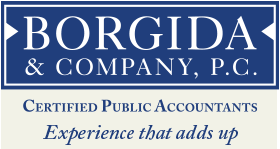
Taxpayers must pay their taxes "as they go." For many taxpayers, their income taxes are withheld from their paychecks. For taxpayers that don't have any withholding, they will need to make estimated tax payments.
Estimated tax payments are made on IRS Form 1040-ES. In Connecticut they are made on Form CT-1040-ES.
The due dates for estimated income taxes are:
- April 15
- June 15
- September 15
- January 15
Taxpayers that live in Connecticut should mail their federal estimated tax payment to:
Internal Revenue Service
P.O. Box 37007
Hartford, CT 06176
Taxpayers that live in Connecticut should mail their state estimated tax payment to:
Department of Revenue Services
P. O. Box 2932
Hartford, CT 06104
As with all communications with the tax authorities, we recommend you send these certified mail, return receipt requested.
Taxpayers may want to pay their estimated Connecticut taxes due in January, 2012 in December, 2011. This may allow them to deduct this payment. To get a tax deduction for this payment, the taxpayer must itemize their deductions. Taxpayers are allowed to take the higher of the standard deduction or their itemized deductions. Be cautious however. For taxpayers subject to the Alternative Minimum Tax ("AMT"), there is no advantage to accelerating the January estimated tax payment into December. State income taxes are an add back for purposes of the AMT and therefore are not deductible in calculating this tax.
To avoid any underpayment penalties, taxpayers must pay in either 100% of the prior year’s tax or 90% of the current year’s tax. For 2011, taxpayers whose prior year adjusted gross income exceeded $150,000, they must pay in either, 110% of the prior year tax or 90% of the current year tax. Calculating 90% of the expected current year tax can be tricky.
To calculate if there is a penalty for underpayment of tax, complete IRS Form 2210, Underpayment of Estimated Tax by Individuals, Estates and Trusts.
For most taxpayers if they have the opportunity to have their income taxes withheld, this is usually easier for them. Withholding can be done on their wages which is reported on Form W-2. Retirees may want to have withholding on their IRA or pension which is Form 1099-R. People receiving Social Security can also elect to have federal income tax withheld. Withholding can be implemented or adjusted by filing a Form W-4 for employees or a Form W-4P for IRA's, pensions and social security.
ACTION ITEM: Taxpayers need to project their income and pay estimated taxes to avoid any underpayment penalties.
Thomas F. Scanlon, CPA, CFP®



This is my first time I have visited here. I found a lot of interesting information in your blog. Keep up the good work.